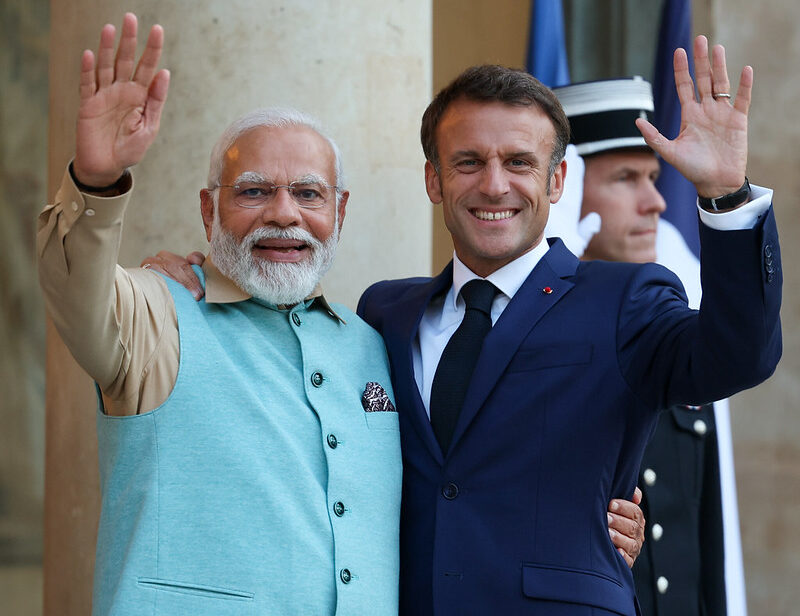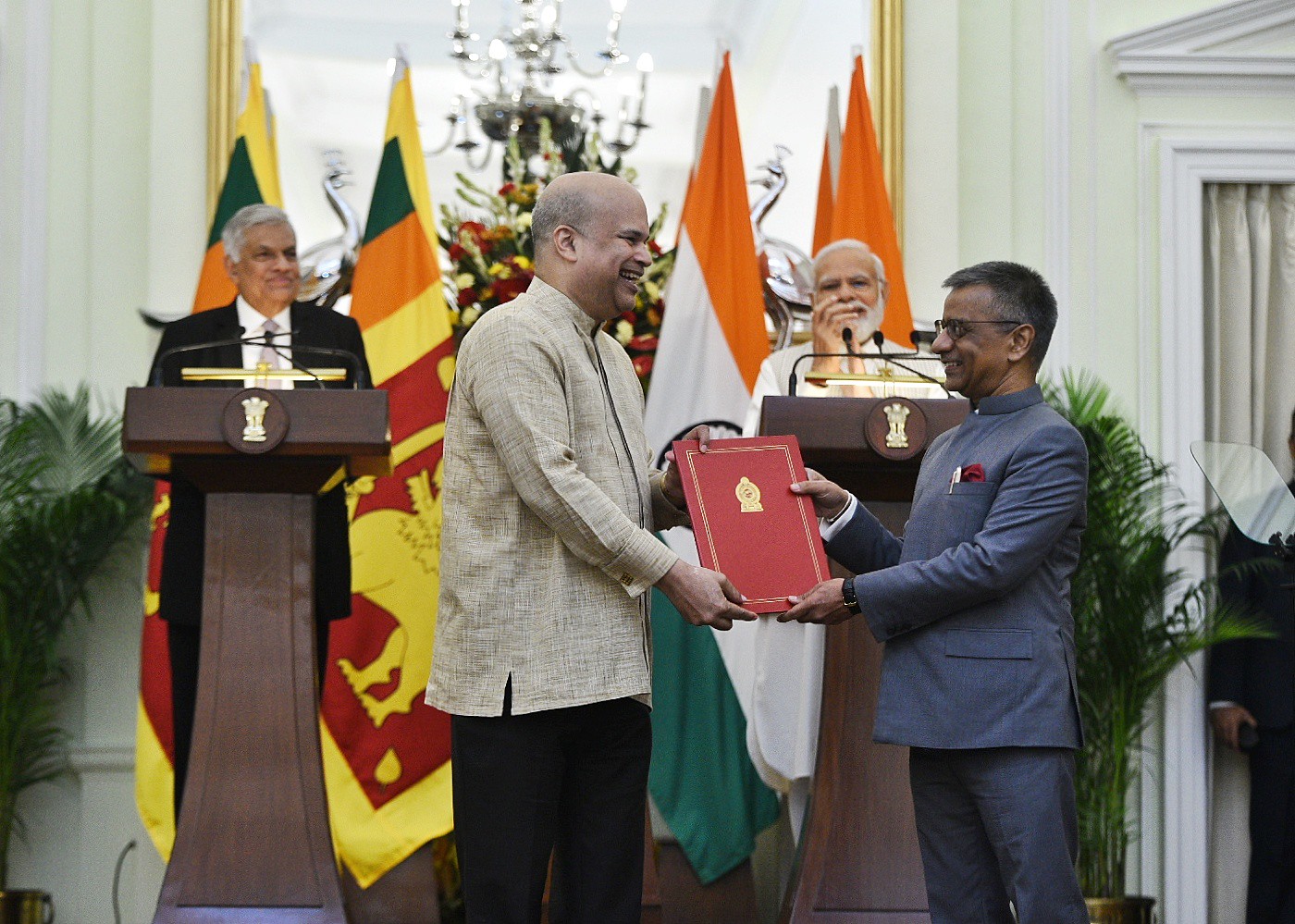
Since the rise of the Indo-Pacific as a dominant geopolitical construct, minilaterals – informal, non-binding, and voluntary partnerships involving a few countries – have emerged as the preferred method for cooperation among regional powers. Coupled with China’s assertive actions in the region, countries, including India, have utilized these ad-hoc mechanisms to address myriad challenges. Although India’s commitment to the Quadrilateral Security Dialogue (Quad) has grown in the last few years, New Delhi has also been involved in several different trilateral partnerships with middle powers in the Indo-Pacific. Terming this “Middle Power Minilateralism,” this article examines why India has enthusiastically explored trilateralism as an effective strategy for cooperating with like-minded powers and how India can foster productive minilaterals in the Indo-Pacific.
Why Minilateralism?
It is no secret that the regional multilateral order has faced several challenges in the last few years, with realist scholars sharply criticizing the Association of Southeast Asian Nations (ASEAN) and other multilateral initiatives for being ineffective. Failure to produce consensus-based results, increasing divisions among members, and resistance toward basic reforms have forced countries to look for alternate options. Furthermore, China’s rise and the associated capacity constraints of major powers have prompted regional middle powers to convene, leveraging their position as states that fall outside the category of great powers but nonetheless enjoy significant influence and strategic value. In such a context, minilateral associations have proved to be ideal platforms for like-minded partners to converge on overlapping interests and shared concerns.
In order to support the success of minilaterals, New Delhi must prioritize regional bilateral relationships and work to narrow the focus of minilateral mandates.
Since its resurgence in late 2017, the Quad has dominated discussions as the most prominent example of minilateral cooperation in the Indo-Pacific. At the same time, the region has also witnessed the rapid proliferation of a large number of other trilateral groupings, often including India. For instance, in the last decade, India has been involved in more than seven such trilaterals, at least five of them focusing specifically on different sub-regions within the Indo-Pacific. By participating in trilaterals with other middle powers involved in the Indo-Pacific, India gains more flexibility in its regional policy since the presence of great powers in minilateral groupings can dominate the agenda or hamper the process of decision-making.
This is advantageous for New Delhi for several reasons. First, India has made it clear that it prefers issue-specific partnerships rather than value-based alignments to bolster its independent foreign policy and preserve its strategic autonomy. Although partnerships like the Quad are vital in promoting India’s interests, New Delhi does not wish to be seen as a mere spoke in the United States-led alliance system. Partnering with different countries on different issues thus helps India enhance its policy of multi-alignment.
Second, as the geopolitical rivalry between the United States and China intensifies, middle powers have realized that to navigate the increasing competition between great powers, it is imperative that they collaborate with each other. Polarization in the geopolitical landscape has resulted in a lack of consensus in multilateral organizations, including ASEAN, the United Nations, and the World Trade Organization. This has further prompted middle powers to work in informal, regional coalitions that can serve as better alternatives.
Third, India does not want to show it belongs to an anti-Western bloc, as it struggles with its own dilemmas regarding its presence in China-centric multilateral groupings, such as the BRICS group and the Shanghai Cooperation Organization (SCO). On the other hand, New Delhi is also aware of the anti-China connotations associated with the Quad and is hesitant to explicitly embrace the association’s security-defense mandate due to India’s historic decision to refrain from military groupings. Moreover, being the only Quad country that shares a land border with China, India is hesitant to openly project the Quad as a grouping that is meant to counter China. Thus, “middle power minilaterals” serve as groupings that exclude both the great powers and provide a more flexible forum for India to cooperate with other states who share common goals and interests outside of defense concerns.

India’s Growing Presence in Middle Power Trilaterals
Trilateralism is not new for India and can be traced back to the 1990s and early 2000s when India began participating in the Russia-India-China (RIC) and India-Brazil-South Africa (IBSA) formats. As the Indo-Pacific became more prominent within public discourse in the last decade, India’s participation in trilaterals similarly rose (see Table 1). The highly promising India-U.S.-Japan trilateral, which began in 2011 as a potential counter to growing Chinese belligerence, lost its relevance with the resurgence of the Quad in 2017. Interestingly, the other middle power members of the Quad have been actively engaging India in various trilaterals. These initiatives include India-France-Australia, India-Australia-Indonesia, India-Japan-Australia, and India-Japan-Italy. Further, the emergence of an increasing number of middle-power trilaterals speaks to the doubts regarding over-reliance on the United States in the Indo-Pacific and questions about its leadership role.
Each of India’s trilaterals has taken up specific issue areas. For instance, while the India-France-UAE minilateral allows cooperation on defense and energy issues with a specific focus on the Western Indian Ocean (WIO), the India-Japan-Australia grouping emphasises supply chain resilience. There have also been calls for other trilaterals that ensure the participation of important stakeholders in the Indo-Pacific, such as the United Kingdom, South Korea, and Germany.
Table 1: Middle Power Trilaterals including India within the Indo-Pacific
| Trilateral | Year |
| India-Japan-Australia | 2015 |
| India-Australia-Indonesia | 2017 |
| India-France-Australia | 2020 |
| India-Japan-Italy | 2021 |
| India-France-UAE | 2023 |
The increasing presence of India in these smaller regional coalitions will help further cement India’s growing centrality in the emerging Indo-Pacific strategic architecture.
Ensuring a Future for Minilateralism
The success of a minilateral depends on the bilateral ties between its members. For instance, the improvement of France-Australia bilateral ties was instrumental in further elevating the India-France-Australia trilateral, which followed a Franco-Australian diplomatic crisis in 2021 after the Australia-U.S.-U.K. (AUKUS) deal. Therefore, New Delhi must ensure that it continues to maintain healthy bilateral links with its neighbors in the Indo-Pacific. If India’s cooperation with other middle powers hinges on the involvement of these neighboring states, bilateral issues, such as the recent India-Maldives diplomatic row, can pose problems for minilateral cooperation.
In order for New Delhi to support the success of minilaterals, these groupings must narrow the focus of their mandates. For example, during the initial years of the India-France-Australia trilateral, the three countries cooperated on many issues ranging from the political situation in Myanmar, the blue economy, to the COVID-19 pandemic. The high number of issues identified and the absence of specific themes led to a lack of clarity regarding effective cooperation in areas of mutual interest, thereby undermining an outcome-oriented approach. Only in June 2023, during the second Focal Points meeting, did the grouping streamline its priorities and focus on distinct areas of cooperation. Addressing specific issues is, therefore, vital for the success of minilateral cooperation.
Participating in these minilaterals will bring India several notable benefits. It will help in adopting an all-round approach toward both traditional and non-traditional security issues, from defense projects and military exercises to energy security, supply chain resilience, maritime safety, humanitarian assistance, disaster relief, fisheries governance, and so on. This will allow New Delhi to work with like-minded partners on crucial issues in a more efficient manner. Finally, the increasing presence of India in these smaller regional coalitions will help further cement India’s growing centrality in the emerging Indo-Pacific strategic architecture.
Also Read: Prospects for India-France-Japan Trilateral Cooperation in the Western Indian Ocean
***
Image 1: Modi with the Indian community in Paris via Flickr
Image 2: Exchange of MOUs between Sri Lanka and India via Flickr


